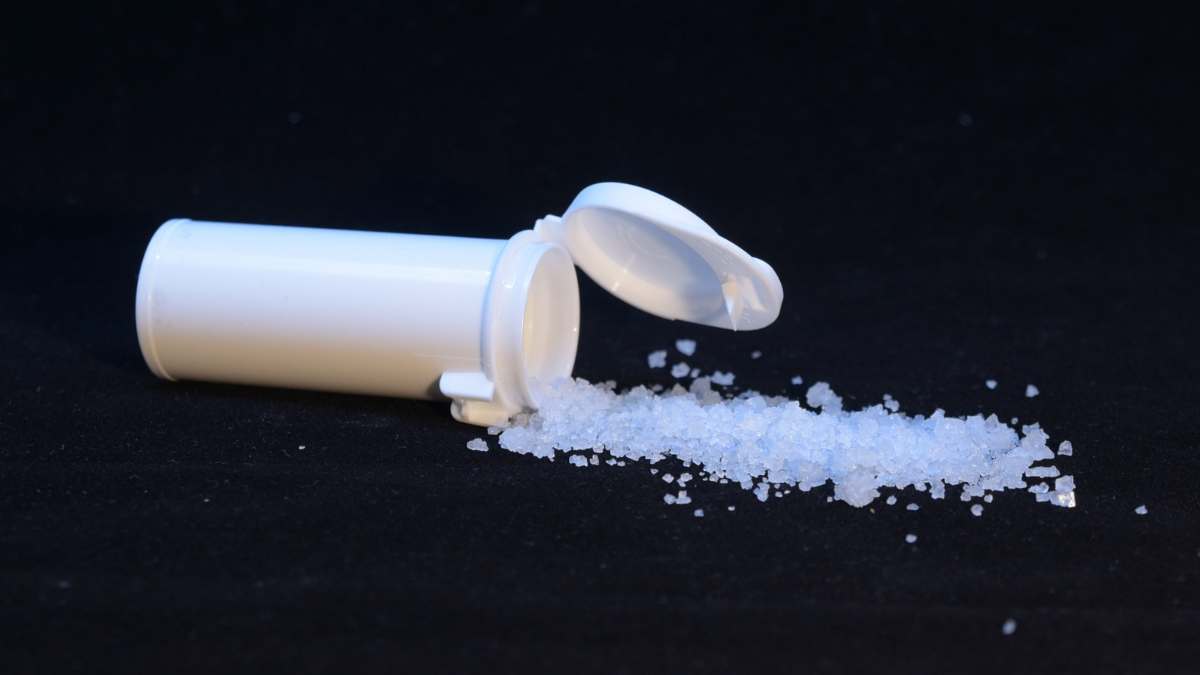When it comes to substance abuse disorder (SUD), struggling with methamphetamine (meth) addiction brings forth the harsh reality of the long-term effects of meth. There is no sugarcoating the fact that meth is extremely dangerous, highly addictive, and destructive to the lives of those who use it. At Enlightened Solutions, we understand these challenges and guide individuals toward lasting recovery.
Unfortunately, thousands of Americans are affected by meth yearly. The Center For Disease Control (CDC) estimates that 2 million people (aged 12 and up) use meth daily, while over 500 people each day try meth for the first time.
Whether they are using meth themselves or suffering the consequences of someone else in their lives who is using the drug, the repercussions are never good.
The long-term effects of methamphetamine inevitably alter and damage lives over time.
What Exactly is Meth?
In simple terms, meth is a synthetic drug often made using ingredients found in cold and allergy medicines, like pseudoephedrine or ephedrine.
These ingredients are combined with dangerous chemicals like ammonia and hydrochloric acid. This process is illegal and highly hazardous due to the risk of explosions and toxic fumes.
The process of making meth itself is hazardous. Many substances used in its creation are flammable, toxic, and even explosive. Many people die making meth due to fire, explosion, suffocation, and exposure.
Meth is typically taken by smoking, snorting, injecting, or swallowing the drug to produce a powerful and euphoric stimulant effect.
Those who inject meth damage their veins, are at increased risk of infections, and cause a great deal of damage to their physical health.
Since meth is so highly addictive, an addiction can take hold after using the drug just one or two times.
Besides the obvious dangers of making and using meth, the long-term effects are ugly and terrifying. Those on meth often cannot sleep for days or weeks, leading to mental and physical health problems.
Hence, the cycle of sleep deprivation followed by a debilitating crash experienced by meth users paints just part of the picture.

Long-Term Effects of Methamphetamine Use
Drug-induced insomnia causes delusions, hallucinations, and psychosis. These often lead to risky behaviors without regard for their safety or those around them.
Meth is also an appetite suppressant, leading to dramatic weight loss and malnutrition. Many who become addicted to meth initially took the drug to lose weight quickly.
Additionally, open sores and skin infections are common, as meth users often scratch and dig at their skin.
One of the most common and ugliest effects of long-term methamphetamine use is ”meth-mouth.” Users who choose to smoke crystal meth are regularly inhaling a concoction of chemicals which significantly reduces oral health. Meth blasts through the enamel and gum lining, creating rotted teeth and gingivitis.
Staying awake in a blackout for potentially weeks at a time, a side effect of meth can also result in neglecting dental practices.
Signs and Symptoms of Long-term Meth Use
Knowing how to spot the physical and psychological symptoms of meth addiction is crucial for effective detox and supporting yourself or a loved one with an addiction.
Signs and symptoms of meth use include:
- Delusions
- Paranoia
- Insomnia
- Irritability
- Open wounds
- Itchy skin
- Scabs and sores
- Erratic behaviour
- Urge for lots of caffeine
- Weight loss
- Excoriation disorder (skin picking)
- Anxiety
- Rotting or loss of teeth (due to meth mouth)
- Loss of interest in once-enjoyed activities
- Convulsions
- Premature aging
- Abnormal skin pallor
- Depression
- Intense cravings
Severe Long-Term Effects of Meth
Continued meth use inevitably leads to more severe physical and mental health effects, such as:
- Seizures
- Loss of teeth due to meth mouth
- Aggressive, erratic, violent behavior
- Acts of crime (robbing and stealing to get drug money)
- Permanent organ damage (heart, brain, liver, kidney and lungs)
- High blood pressure
- Heart attack and stroke
- Psychosis (paranoia, hallucinations, delusions) lasting for months and years.
- Frequent infections from weakened immune system.
- Damage to blood vessels
- Impaired motor skills
- Prolonged depression
- Suicidal tendencies
Lastly, meth abuse can “and does” result in death. The CDC reports meth overdoses have shot significantly in the past decades.

Reach Out for Meth Addiction Help Today
The increasing rates of meth abuse, addiction, and overdose deaths underscore its troubling and persistent impact in the United States. Meth use is hard on the user, those who love them, and the entire community.
Recovery begins with you. Getting help for the long-term effects of meth addiction is the courageous first step needed to reclaim your life.
Let Enlighted Solutions guide you on your journey to a healthy, addiction-free life. Our compassionate team provides spiritual care and holistic treatments, combining evidence-based clinic care, proven alternative healing practices, and a solid 12-step philosophy.
A life addicted to meth is not living. The power to heal is yours, and we’re here to help you every step of the way.
Contact us today for meth addiction treatment and to start healing from meth use and the long-term effects of methamphetamine addiction.
Contact Us
We are here to help. Contact us today and get the answers you need to start your journey to recovery!
-
Discuss treatment options
-
Get help for a loved one
-
Verify insurance coverage
-
Start the admissions process
Get In Touch
Fill out this form and we’ll respond to your message
You Have Any Questions?
-
Don't hesitate to contact us or visit our clinic.
-
Contact us:
-
Email Us:
-
Address:600 South Odessa Ave Egg Harbor City, NJ 08215


